Stuart Kauffman
description: an American theoretical biologist and complex systems researcher concerning the origin of life on Earth
48 results

Complexity: A Guided Tour
by
Melanie Mitchell
Published 31 Mar 2009
However, if the bacterium suddenly finds itself in a glucose-free but lactose-rich environment, then lactose molecules bind to the lactose repressor and detach it from genes A, B, and C, which then proceed to produce the enzymes that allow lactose metabolism. Regulatory interactions like this, some much more intricate, are the heart and soul of complexity in genetics. Network thinking played a role in understanding these interactions as early as the 1960s, with the work of Stuart Kauffman (more on this in chapter 18). More recently, network scientists teaming up with geneticists have demonstrated evidence that at least some networks of these interactions are approximately scale-free. Here, the nodes are individual genes, and each node links to all other genes it regulates (if any).
…
It’s possible that genomes vastly different from ours could result in new types of body plans, but in practice, evolution can’t get us there because we are so reliant on the existing regulatory genes. Our possibilities for evolution are constrained. According to Evo-Devo, the notion that “every trait can vary indefinitely” is wrong. Genetic Regulation and Kauffman’s “Origins of Order” Stuart Kauffman is a theoretical biologist who has been thinking about genetic regulatory networks and their role in constraining evolution for over forty years, long before the ascendency of Evo-Devo. He has also thought about the implications for evolution of the “order” we see emerging from such complex networks.
…
At SFI seminars, Kauffman would sometimes chime in from the audience with, “I know I’m just a simple country doctor, but … ” and would spend a good five minutes or more fluently and eloquently giving his extemporaneous opinion on some highly technical topic that he had never thought about before. One science journalist called him a “world-class intellectual riffer,” which is an apt description that I interpret as wholly complimentary. Stuart Kauffman (Photograph by Daryl Black, reprinted with permission.) Stuart’s “simple country doctor” humble affect belies his personality. Kauffman is one of Complex Systems’ big thinkers, a visionary, and not what you would call a “modest” or “humble” person. A joke at SFI was that Stuart had “patented Darwinian evolution,” and indeed, he holds a patent on techniques for evolving protein sequences in the laboratory for the purpose of discovering new useful drugs.
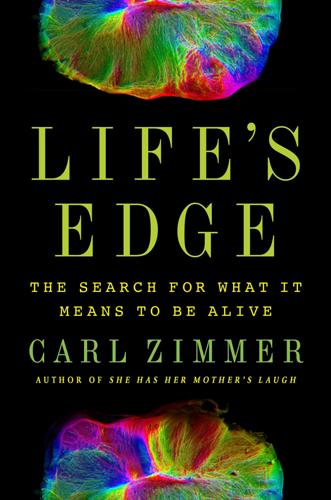
Life's Edge: The Search for What It Means to Be Alive
by
Carl Zimmer
Published 9 Mar 2021
If they wanted to figure out how planes fly, it would have been a waste of time to study a modern airliner. They’d get lost in video screens, call buttons, and snack carts. To discover the things that matter to flight itself, they’d be better off going to Kitty Hawk and studying the Wright Flyer, with its simple wings of spruce and ash. In the 1960s a medical student named Stuart Kauffman joined this tiny society. At the time, biologists were discovering some of the deep connections between genes and proteins that make life possible. They were finding that certain genes become active only if a certain protein lands on the DNA nearby. They found some of the links in the long chains of reactions that make metabolism possible.
…
Only if they have a resilient structure—perhaps loops within its loops—can they withstand hard times when their ingredients run low. Scientists will have to settle questions such as these before autocatalytic sets can become part of a mature theory of life. Such a theory might explain how life sustains itself and perhaps even how it emerged in the first place. In 2019, Stuart Kauffman and two colleagues considered David Deamer’s scenario in which life started as RNA-based protocells in drying ponds. They made some rough estimates of the variety of RNA molecules that could have formed in such a pond. Kauffman and his colleagues concluded that a single pool could very well have produced an autocatalytic set of RNA molecules.
…
They’ve created theories: In addition to autocatalytic sets and assembly theory, there are a number of other projects underway. See, for example, England 2020 and Palacios et al. 2020. Robert Rosen and Francisco Varela: Cornish-Bowden and Cárdenas 2020. compressed descriptions: Walker 2018. the essential conditions: Letelier, Cárdenas, and Cornish-Bowden 2011. Stuart Kauffman: Hordijk 2019; Kauffman 2019; Levy 1992. Oil is the product of catalysts: Johns 1979. sustain themselves: Mariscal et al. 2019. Reza Ghadiri: Ashkenasy et al. 2004. a mature theory of life: Hordijk, Shichor, and Ashkenasy 2018; Xavier et al. 2020. self-sustaining chemistry: Hordijk, Steel, and Kauffman 2019.
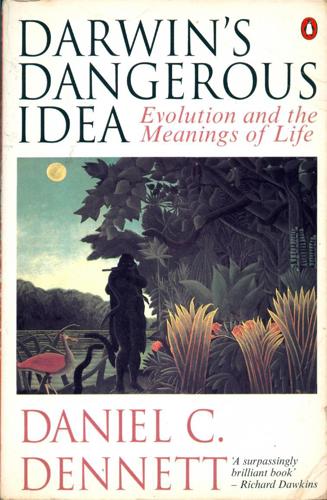
Darwin's Dangerous Idea: Evolution and the Meanings of Life
by
Daniel C. Dennett
Published 15 Jan 1995
If some biologists have habitually overlooked this requirement, they are making the same mistake as the art historians who ignore the building process of their monuments. Far from being too taken with an engineering mentality, they have not taken engineering questions seriously enough. 7. STUART KAUFFMAN AS META-ENGINEER Since Darwin, we have come to think of organisms as tinkered-together contraptions and selection as the sole source of order. Yet Darwin could not have begun to suspect the power of self-organization. We must seek our principles of adaptation in complex systems anew. — STUART KAUFFMAN, quoted in Ruthen 1993, p. 138 History tends to repeat itself. Today we all recognize that the rediscovery of Mendel's laws, and with them the concept of the gene as a unit of heredity, was the salvation of Darwinian thinking, but that was not how it appeared at the time.
…
181 CHAPTER EIGHT Biology Is Engineering 187 1. The Sciences of the Artificial 187 2. Darwin Is Dead — Long Live Darwin! 190 3. Function and Specification 195 4. Original Sin and the Birth of Meaning 200 5. The Computer That Learned to Play Checkers 207 6. Artifact Hermeneutics, or Reverse Engineering 212 7. Stuart Kauffman as Meta-Engineer 220 {9} CHAPTER NINE Searching for Quality 1. The Power of Adaptationist Thinking 229 2. The Leibnizian Paradigm 238 3. Playing with Constraints 251 CHAPTER TEN Bully for Brontosaurus 262 1. The Boy Who Cried Wolf? 262 2. The Spandrel's Thumb 267 3. Punctuated Equilibrium: A Hopeful Monster 282 4.
…
Some of the disputes I boldly adjudicate, and others I leave wide open but place in a framework so that you can see what the issues are, and whether it matters — to you — how they come out. I hope you will read this literature, for it is packed with wonderful ideas. Some of the books I cite are among the most difficult books I have ever read. I think of the books by Stuart Kauffman and Roger Penrose, for instance, but they are pedagogical tours deforce of highly advanced materials, and they can and should be read by anyone who wants to have an informed opinion about the important issues they raise. Others are less demanding — clear, informative, well worth some serious effort — and still others are not just easy to read but a great delight — superb examples of Art in the service of Science.
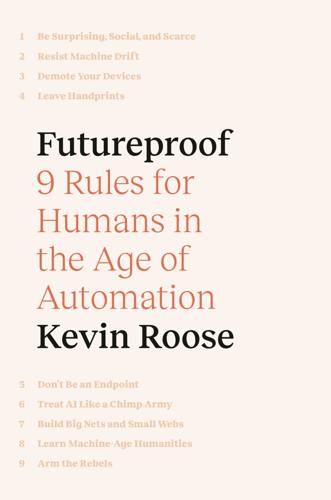
Futureproof: 9 Rules for Humans in the Age of Automation
by
Kevin Roose
Published 9 Mar 2021
Or Joy Buolamwini and Timnit Gebru Kevin Roose, “The 2019 Good Tech Awards,” New York Times, December 30, 2019. Or Sasha Costanza-Chock Sasha Costanza-Chock, Design Justice: Community-Led Practices to Build the Worlds We Need (Boston: MIT Press, 2020). a term coined by the evolutionary biologist Stuart Kauffman Stuart Kauffman, The Origins of Order: Self-Organization and Selection in Evolution (New York: Oxford University Press, 1993). Sarah Bagley made history again Madeleine B. Stern, We the Women: Career Firsts of Nineteenth-Century America (Lincoln, Neb.: Bison Books, 1994). By Kevin Roose Futureproof Young Money The Unlikely Disciple About the Author Kevin Roose is a technology columnist for The New York Times.
…
As we fight to shape today’s technological landscape, I think we have a special obligation to fight for the people who stand to lose the most from AI and automation, including historically marginalized communities and people who don’t have much of a safety net. I also think we need to resist the urge to push the AI conversation too far into the future. I’ve always loved the concept of the “adjacent possible,” a term coined by the evolutionary biologist Stuart Kauffman to describe the way biological organisms evolve in gradual, incremental steps. The adjacent possible is a useful concept to apply to the world of technology, because it takes us out of the realm of sci-fi and narrows our scope to more realistic outcomes. A world in which robots flawlessly perform all human labor, freeing us all up to make art and play video games every day, is probably not part of the adjacent possible.
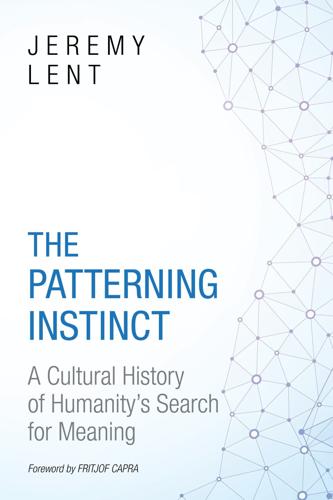
The Patterning Instinct: A Cultural History of Humanity's Search for Meaning
by
Jeremy Lent
Published 22 May 2017
Instead of seeing each individual as selfish and competitive, seeking only personal advantage, it offers a more nuanced understanding of humanity as also cooperative and altruistic, embedded within larger social and natural networks.41 Scientists at the forefront of systems thinking recognize the far-reaching ramifications of their findings. “We are seeking a new conceptual framework that does not yet exist,” writes researcher Stuart Kauffman. However, while this view of nature is relatively new in science, we have seen in this book how earlier cultures have already explored many of the philosophical implications of a connected cosmos. The wisdom of indigenous worldviews shares much with systems thinking, and the Neo-Confucian investigation of the li—the organizing principles of the universe—offers deep insights to modernity, with its understanding of the Tao as the metapattern of all nature's principles, discoverable in one's own nature as well as in the natural world.42 Remarkably, though, many people today remain unaware of this alternative way of understanding nature.
…
I am indebted to other notable scholars whose insights helped shape this book into its particular pattern of meaning, particularly Sir Geoffrey Lloyd, Nathan Sivin, Jared Diamond, Merlin Donald, Terrence Deacon, Steve Mithen, Michael Tomasello, Thomas McEvilley, Bruce Trigger, Robert Wright, Edward Slingerland, David Anthony, Richard Nisbett, Christopher Boehm, Stuart Kauffman, Evan Thompson, and Joseph Tainter. I have received helpful feedback and encouragement from leaders in their fields regarding particular chapters that I have shared with them over the years, including Fritjof Capra, Sir Geoffrey Lloyd, David Korten, Nathan Sivin, Paul Ekman, Yair Lior, Sun Yue, Sir Michael Atiyah, and Jerry Feldman.
…
George Lakoff and Mark Johnson, Metaphors We Live By (Chicago: University of Chicago, 2003), 3, 145–46. See, in particular, chapter 15, “Contrasting Metaphors of Nature,” for more detail on this and other core metaphors of nature and their historical impact. 18. Cilliers, Complexity and Postmodernism, 3. 19. Ibid., 3–5. For a more in-depth understanding of complex systems, see Stuart Kauffman, At Home in the Universe: The Search for Laws of Self-Organization and Complexity (New York: Oxford University Press, 1995); Evan Thompson, Mind in Life: Biology, Phenomenology, and the Sciences of Mind (Cambridge, MA: Harvard University Press, 2007); Ricard Solé and Brian Goodwin, Signs of Life: How Complexity Pervades Biology (New York: Basic Books, 2000). 20.
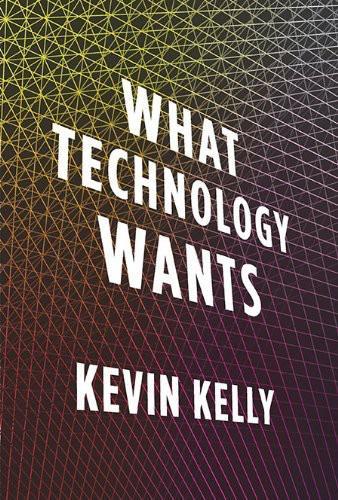
What Technology Wants
by
Kevin Kelly
Published 14 Jul 2010
In this view, “life emerges from a soup in the same dependable way that a crystal emerges from a saturated solution, with its final from predetermined by the interatomic forces.” Cyril Ponnamperuma, an early pioneer in biogenesis (the study of the origin of life), believed “there are inherent properties in the atoms and molecules which seem to direct the synthesis” toward life. Theoretical biologist Stuart Kauffman believes his exhaustive computer simulations of prebiotic networks demonstrate that when conditions are right, the emergence of life is inevitable. Our existence here, he says, is a case of “not we the accidental but we the expected.” Mathematician Manfred Eigen wrote in 1971, “The evolution of life, if it is based on a derivable physical principle, must be considered an inevitable process.”
…
Mathematician John Conway proposed a proof arguing that neither the mathematics of randomness nor the logic of determinism can properly explain the sudden (why right now?) decay or shift of spin direction in cosmic particles. The only mathematical or logical option left is free will. The particle simply chooses in a way that is indistinguishable from the tiniest quantum bit of free will. Theoretical biologist Stuart Kauffman argues that this “free will” is a result of the mysterious quantum nature of the universe, by which quantum particles can be two places at once, or be both wave and particle at once. Kauffman points out that when physicists shoot photons of light (which are wave/particles) through two tiny parallel slits (a famous experiment), the photon can pass through only as either a wave or a particle, but not both.
…
Of course, any errors in transmitting their thoughts are mine. Chris Anderson Gordon Bell Katy Borner Stewart Brand Eric Brende David Brin Rob Carlson James Carse Jamais Cascio Richard Dawkins Eric Drexler Freeman Dyson George Dyson Niles Eldredge Brian Eno Joel Garreau Paul Hawken Danny Hillis Piet Hut Derrick Jensen Bill Joy Stuart Kauffman Donald Kraybill Mark Kryder Ray Kurzweil Jaron Lanier Pierre Lemonnier Seth Lloyd Lori Marino Max More Simon Conway Morris Nathan Myhrvold Howard Rheingold Paul Saffo Kirkpatrick Sale Tim Sauder Peter Schwartz John Smart Lee Smolin Alex Steffen Steve Talbot Edward Tenner Sherry Turkle Hal Varian Vernor Vinge Jay Walker Peter Warshall Robert Wright Annotated Reading List Of the hundreds of books I consulted for this project, I found the following selected ones to be the most useful for my purposes.
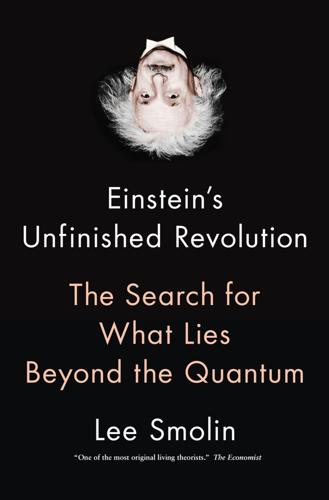
Einstein's Unfinished Revolution: The Search for What Lies Beyond the Quantum
by
Lee Smolin
Published 31 Mar 2019
Then I want very much to thank those who have become friends through our shared work on foundational problems: Stephon Alexander, Giovanni Amelino-Camelia, Abhay Ashtekar, Eli Cohen, Marina Cortês, Louis Crane, John Dell, Avshalom Elitzur, Laurent Freidel, Sabine Hossenfelder, Ted Jacobson, Stuart Kauffman, Jurek Kowalski-Glikman, Andrew Liddle, Renate Loll, João Magueijo, Roberto Mangabeira Unger, Fotini Markopoulou, and Carlo Rovelli. The book has been very much improved by feedback from Krista Blake, Saint Clair Cemin, Dina Graser, Jaron Lanier, and Donna Moylan. I also want to thank Kaća Bradonjić for the illustrations and for many wise and helpful suggestions on the text. For helpful conversations and correspondence on specific points, I must thank Jim Baggott, Julian Barbour, Freeman Dyson, Olival Freire, Stuart Kauffman, Michael Nielsen, Philip Pearle, Bill Poirier, Carlo Rovelli, and John Stachel.
…
* * * — SEVERAL WRITERS, beginning with Heisenberg and including my teacher Abner Shimony, have proposed that the world of the possible has to be included as part of reality—because in quantum physics the possible influences the future of the actual. This view has been recently developed by my friend Stuart Kauffman, in collaboration with Ruth Kastner and Michael Epperson.7 There is no way to describe this view that doesn’t cause some tension with ordinary language usage, but keep an open mind and I’ll aim to be clear. We start by stating that there are two ways for a circumstance to be real. It can be actual, which means that it is part of the world in the same way that a Newtonian particle has a definite position.
…
,” Journal of Mathematical Physics 36, no. 11 (May 1995): 6180–93, arXiv:gr-qc/9504038; Carlo Rovelli, “Relational Quantum Mechanics,” International Journal of Theoretical Physics 35, no. 8 (August 1996): 1637–78, arXiv:quant-ph/9609002; Lee Smolin, “The Bekenstein Bound, Topological Quantum Field Theory and Pluralistic Quantum Cosmology” (1995), arXiv:gr-qc/9508064. 7. Ruth E. Kastner, Stuart Kauffman, and Michael Epperson, “Taking Heisenberg’s Potentia Seriously” (2017), arXiv:1709.03595. 8. Julian Barbour, The End of Time: The Next Revolution in Physics (Oxford: Oxford University Press, 1999). 9. Henrique de A. Gomes, “Back to Parmenides” (2016, 2018), arXiv:1603.01574. Chapter 13: Lessons 1.
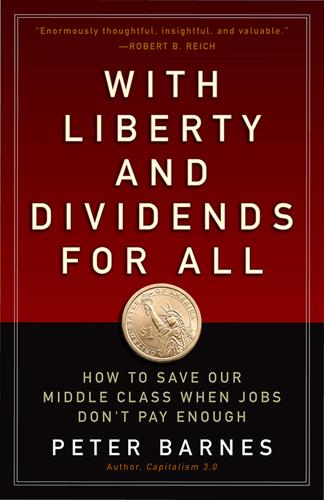
With Liberty and Dividends for All: How to Save Our Middle Class When Jobs Don't Pay Enough
by
Peter Barnes
Published 31 Jul 2014
The reason for this punctuated pattern seems to be that complex systems live near equilibrium but never quite at it. They hover in a zone between equilibrium and chaos, and every once in a while a crisis pushes them toward (or over) the chaotic edge. At such times, they either collapse or shift into what biologist Stuart Kauffman calls the “adjacent possible.”3 The adjacent possible isn’t simply whatever happens next. Rather, it’s a set of potential futures in which modified versions of the existing system lurk. Which of these versions eventually emerges is inherently unpredictable. But when the system includes humans, it’s possible for humans to affect the outcome.
…
Joseph Schumpeter, Capitalism, Socialism, and Democracy (New York: Harper & Row, 1942). 2. Niles Eldredge and Stephen Jay Gould, “Punctuated equilibria: An alternative to phyletic gradualism,” in T. J. M. Schopf, ed., Models in Paleobiology (San Francisco: Freeman Cooper, 1972, 82—115, http://www.blackwellpublishing.com/ridley/clas-sictexts/eldredge.pdf. 3. Stuart Kauffman, Investigations (New York: Oxford University Press, 2003). 4. Baker v. Carr, 369 US 186 (1962). 5. Zobel v. Williams, 457 US 55 (1982). 6. The term “pre-distribution” was first used, as best I can determine, by Yale political scientist Jacob Hacker, in a 2011 essay, “The institutional foundations of middle-class democracy,” which is well worth reading; http://www.policy-network.net/pno_detail.aspx?
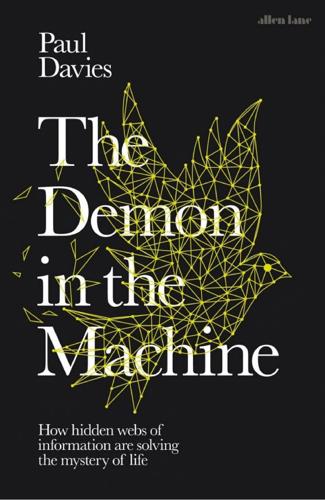
The Demon in the Machine: How Hidden Webs of Information Are Finally Solving the Mystery of Life
by
Paul Davies
Published 31 Jan 2019
Farther afield, I greatly value my many conversations over several years with Christoph Adami at Michigan State University, Gregory Chaitin of the Federal University of Rio de Janeiro, James Crutchfield at the University of California Davis, Andrew Briggs at the University of Oxford, David Chalmers at New York University, Lee Cronin at Glasgow University, Max Tegmark at MIT, Steven Benner at the Foundation for Applied Molecular Evolution, Michael Berry at Bristol University, George Ellis at the University of Cape Town, Piet Hut at the Earth Life Sciences Institute in Tokyo and the Institute for Advanced Study in Princeton, Stuart Kauffman of the Institute of Systems Biology, Charles Lineweaver at the Australian National University, who playfully disagrees with almost everything I say and write, and Christopher McKay at NASA Ames. Also in Australia, Derek Abbott at the University of Adelaide has clarified several aspects of the physics of life for me, and John Mattick, the visionary director of the Garvan Institute in Sydney, has taught me that genetics and microbiology are not done deals.
…
DARWINISM 2.0 Nessa Carey, The Epigenetics Revolution: How Modern Biology is Rewriting Our Understanding of Genetics, Disease and Inheritance (Columbia University Press, 2013) Richard Dawkins, The Selfish Gene (Oxford University Press, 1976) Daniel Dennett, Darwin’s Dangerous Idea: Evolution and the Meaning of Life (Simon and Schuster, 1995) Robin Hesketh, Introduction to Cancer Biology (Cambridge University Press, 2013) Eva Jablonka and Marion Lamb, Evolution in Four Dimensions (MIT Press, 2005) George Johnson, The Cancer Chronicles: Unlocking Medicine’s Deepest Mystery (Vintage, 2014) Stuart Kauffman, The Origin of Order: Self-organization and Selection in Evolution (Oxford University Press, 1993) Lewis J. Kleinsmith, Principles of Cancer Biology (Pearson, 2005) Matthew Niteki (ed.), Evolutionary Innovations (University of Chicago Press, 1990) Massimo Pigliucci and Gerd B. Müller (eds.), Evolution, the Extended Synthesis (MIT Press, 2010) Trygve Tollefsbol (ed.), Handbook of Epigenetics (Academic Press, 2011) Andreas Wagner, Arrival of the Fittest (Current, 2014) Robert A.
…
THE GHOST IN THE MACHINE David Chalmers, The Conscious Mind: In Search of a Fundamental Theory (Oxford University Press; rev. edn, 1997) Daniel Dennett, Consciousness Explained (Little, Brown, 1991) George Ellis, How Can Physics Underlie the Mind? Top-down Causation in the Human Context (Springer, 2016) Douglas R. Hofstadter and Daniel C. Dennett, The Mind’s I: Fantasies and Reflections on Self and Soul (Basic Books, 2001) Stuart Kauffman, At Home in the Universe: The Search for the Laws of Self-Organization and Complexity (Oxford University Press, 1996) Arthur Koestler, The Ghost in the Machine (Hutchinson, 1967) Nancey Murphy, George F. R. Ellis and Timothy O’Connor (eds.), Downward Causation and the Neurobiology of Free Will (Springer, 2009) Roger Penrose, The Emperor’s New Mind: Concerning Computers, Minds and the Laws of Physics (Oxford University Press, 1989) Bruce Rosenblum and Fred Kuttner, Quantum Enigma: Physics Encounters Consciousness (Oxford University Press; 2nd edn, 2011) Notes 1.
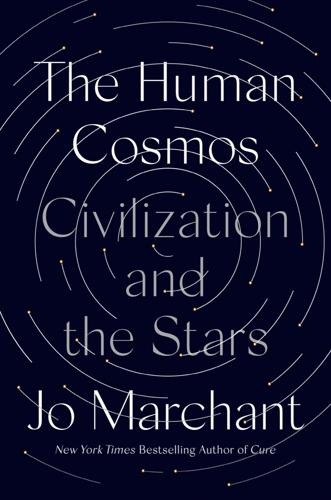
The Human Cosmos: A Secret History of the Stars
by
Jo Marchant
Published 15 Jan 2020
“not worth a damn”: Michael Chorost, “Where Thomas Nagel Went Wrong,” Chronicle of Higher Education, May 13, 2013, https://www.chronicle.com/article/Where-Thomas-Nagel-Went-Wrong/139129. such as physicist Paul Davies and biologist Stuart Kauffman: Davies, Goldilocks Enigma; Paul Davies, The Demon in the Machine: How Hidden Webs of Information Are Solving the Mystery of Life (London: Allen Lane, 2019); Stuart Kauffman, “Beyond the Stalemate,” Cornell University, arXiv.org, https://arxiv.org/abs/1410.2127v2; Stuart Kauffman, Reinventing the Sacred: A New View of Science, Reason and Religion (New York: Basic Books, 2008). “the most certain thing . . . I was mocked”: Author interview with Galen Strawson in Chalk Farm, London, August 13, 2019.
…
In 2012, the atheist philosopher Thomas Nagel complained in his book Mind and Cosmos that the conventional mix of materialism and Darwinism “is incapable of providing an adequate account . . . of our universe.” He was widely criticized for it—Steven Pinker tweeted that the book exposed “the shoddy reasoning of a once-great thinker,” while Dennett said it was “not worth a damn”—but Nagel’s not alone. High-profile scientists, too, such as physicist Paul Davies and biologist Stuart Kauffman, reject the idea of a supernatural God but have questioned whether cosmic puzzles such as fine-tuning and consciousness can really be dismissed as random accidents. Davies, Kauffman and others have suggested that the laws of physics as we know them might not explain everything. Maybe there’s some extra principle, yet to be discovered, that has been nudging the universe toward complexity, so that life and consciousness could arise.
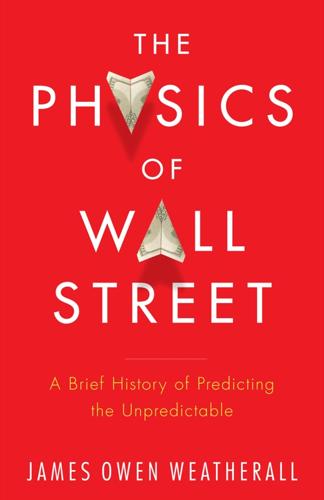
The Physics of Wall Street: A Brief History of Predicting the Unpredictable
by
James Owen Weatherall
Published 2 Jan 2013
Around the same time, he began to work with other researchers interested in bringing ideas from physics to bear on economics, including Mike Brown, the first CFO of Microsoft and a former chair of the NASDAQ board, Zoe-Vonna Palmrose, an influential accounting professor working at the SEC, and Stuart Kauffman, who had worked on complex systems theory at the Santa Fe Institute, alongside Doyne Farmer and Norman Packard before they started the Prediction Company. In September 2008, Weinstein visited Perimeter a second time, for a conference on science in the twenty-first century. The talks focused on ways in which scientific research was changing with new funding sources, with new means of disseminating ideas, such as blogs and online conferences, and with new ideas about where research should and could happen, with places like Perimeter and the Santa Fe Institute becoming centers of study outside of the traditional university.
…
The paper was a kind of translation dictionary, explaining basic economics to physicists and then showing how ideas that physicists were already comfortable with could be applied to this otherwise foreign science. Meanwhile, Smolin and Weinstein began working with Smolin's other collaborators — Mike Brown, Zoe-Vonna Palmrose, and Stuart Kauffman — to organize a conference at Perimeter. It was scheduled for May 2009. The plan was to invite representatives from across the spectrum of economics, to bring together a diverse and heterodox group of people to discuss how to move the field forward after the recent crisis. In addition to the organizers, Doyne Farmer and Emanuel Derman participated.
…
“An Observational Test of the Critical Earthquake Concept.” Journal of Geophysical Research 103: 24359–72. Broad, William J. 1992. “Defining the New Plowshares Those Old Swords Will Make.” The New York Times, February 5. Brooks, David. 2010. “The Return of History.” The New York Times, March 26, A27. Brown, Mike, Stuart Kauffman, Zoe-Vonna Palmrose, and Lee Smolin. 2008. “Can Science Help Solve the Economic Crisis?” Available, with a response from Weinstein, at http://www.edge.org/conversation/can-science-help-solve-the-economic-crisis. Brown, Robert. 1828. “A Brief Account of Microscopical Observations Made on the Particles Contained in the Pollen of Plants.”
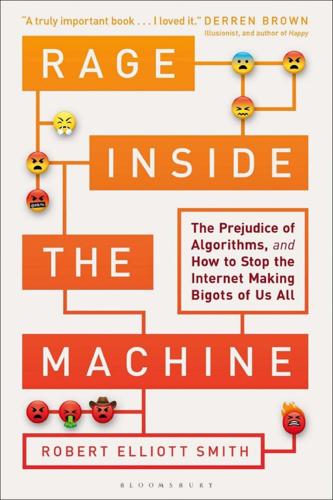
Rage Inside the Machine: The Prejudice of Algorithms, and How to Stop the Internet Making Bigots of Us All
by
Robert Elliott Smith
Published 26 Jun 2019
Some believe that it may be that natural systems intrinsically evolve to the edge of chaos, and in fact that an emergent edge of chaos behaviour, rather than the ‘survival of the fittest’ is the real defining quality of systems that are alive. SFI researcher, doctor and theoretical biologist Stuart Kauffman is a prominent proponent of this theory, and has focused his research on the nature of living systems. His early work appears in the 1993 book Origins of Order,6 which considers the complexity of behaviour of networks of actors. For Kauffman, those actors could be small chemical reactions in a primordial soup at the origins of life, which, by chance, come to self-reinforce one another.
…
Edge of chaos complexity has revealed a new reality: that we cannot characterize the world and the phenomena around us algorithmically, neither as merely deterministic sets of rules nor purely random rolls of the dice. This complexity is unpredictable, yet it has patterns; unpredictable patterns may in fact be a characteristic of systems that we would call living systems. Stuart Kauffman has used mathematical models to show that living systems tend to evolve towards an edge of chaos: that point where their behaviour is maximally random while maintaining some structure. Existing at this edge allows the evolving system to retain the maximum number of adjacent possible states that it can change to at any moment, while still maintaining stable behaviours.
…
A human individual is an enormously capital-C Complex system, as are our societies. Human beings, as far as we can tell, operate according to the laws of physics, but complexity science tells us that this does not mean they are reducible, particularly to mere computations. There is no faith required to believe that humans are irreducible, that complexity really matters. Stuart Kauffman, in particular, deals with this fact in his book Reinventing the Sacred: A New View of Science, Reason, and Religion,2 where he discusses that complexity is what separates the science of today from the simplistic rationalism of the scientific past. That rationalism precisely describes algorithmic models, and it is what makes them tend towards bias (simplification) and polarity (optimization).
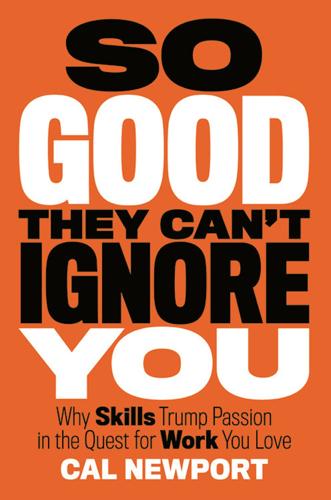
So Good They Can't Ignore You: Why Skills Trump Passion in the Quest for Work You Love
by
Cal Newport
Published 17 Sep 2012
I ask, however, that you stick with me, as the explanation for this phenomenon is the first link in a chain of logic that helped me decode what Pardis did differently than Sarah and Jane. Big ideas, Johnson explained, are almost always discovered in the “adjacent possible,” a term borrowed from the complex-system biologist Stuart Kauffman, who used it to describe the spontaneous formation of complex chemical structures from simpler structures. Given a soup of chemical components sloshing and mixing together, noted Kauffman, lots of new chemicals will form. Not every new chemical, however, is equally likely. The new chemicals you’ll find are those that can be made by combining the structures already in the soup.
…
It provides a unifying goal for your career. It’s more general than a specific job and can span multiple positions. It provides an answer to the question “What should I do with my life?” the adjacent possible (introduced in Rule #4): A term taken from the science writer Steven Johnson, who took it from Stuart Kauffman, that helps explain the origin of innovation. Johnson notes that the next big ideas in any field are typically found right beyond the current cutting edge, in the adjacent space that contains the possible new combinations of existing ideas. The key observation is that you have to get to the cutting edge of a field before its adjacent possible—and the innovations it contains—becomes visible.
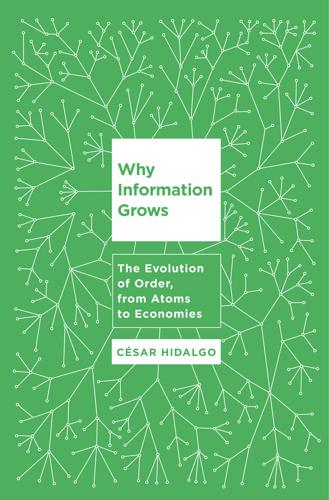
Why Information Grows: The Evolution of Order, From Atoms to Economies
by
Cesar Hidalgo
Published 1 Jun 2015
It would be a chemical transistor. In an awfully crude way this chemical system models a primitive metabolism. In an even cruder way, it is a model of a cell differentiating from one cell type to another—the cell types can be viewed abstractly as the dynamic steady states of these systems, as the complex systems biologist Stuart Kauffman suggested decades ago.14 Highly interacting out-of-equilibrium systems, whether they are trees reacting to the change of seasons or chemical systems processing information about the inputs they receive, teach us that matter can compute. These systems tell us that computation precedes the origins of life just as much as information does.
…
Technically this is known as a bifurcation. It occurs in systems that have nonlinearities, which come from the fact that the production of some intermediate compounds {M} or outputs {O} require, respectively, combinations of inputs {I} and intermediate states {M}. 14. This is one of the central ideas described in Stuart Kauffman, The Origins of Order: Self-Organization and Selection in Evolution (New York: Oxford University Press, 1993), and it is an implication of his model of random Boolean networks. 15. For a more detailed explanation, see Prigogine and Stengers, Order Out of Chaos, and Ilya Prigogine and Isabelle Stengers, The End of Certainty: Time, Chaos, and the New Laws of Nature (New York: Free Press, 1997).
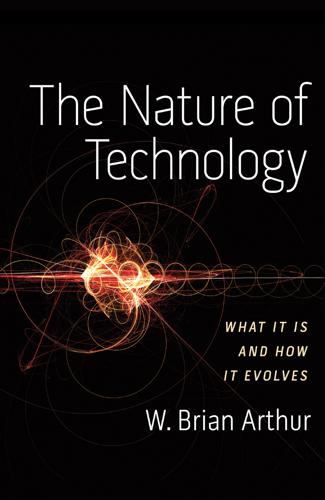
The Nature of Technology
by
W. Brian Arthur
Published 6 Aug 2009
We need challenge, we need meaning, we need purpose, we need alignment with nature. Where technology separates us from these it brings a type of death. But where it enhances these, it affirms life. It affirms our humanness. NOTES Preface 2 Technologies in other… combinations: I discussed this idea with Stuart Kauffman in 1987. Kauffman has since followed up with further thoughts on the self-creating aspect of technology in several of his writings. 4 beautiful case studies… historians: See in particular Aitken, Constant, Hughes, Landes, Rhodes, and Tomayko. Chapter 1: Questions 9 monkey with tiny electrodes: Meel Velliste, et al.
…
Brid Arthur helped me plan the flow of the book, and Niamh Arthur helped edit the final draft. One of the joys of the project has been the company of friends and colleagues who have provided intellectual stimulation and moral support over the years. I thank in particular Cormac McCarthy and my SFI co-conspirator David Lane; also Kenneth Arrow, Jim Baker, John Seely Brown, Stuart Kauffman, Bill Miller, Michael Mauboussin, Richard Palmer, Wolfgang Polak, Nathan Rosenberg, Paul Saffo, Martin Shubik, Jan Vasbinder, and Jitendra Singh. Not least, I am deeply grateful to my partner, Runa Bouius, for her patience and support during the time this book was being written. INDEX accounting, 85, 153, 197 agriculture, 10, 25, 154, 196 air inlet system, 40, 41 Airbus, 91 aircraft, 7, 10, 22, 182 design of, 72–73, 77, 91, 92–94, 108, 111–12, 120, 133, 136–37 detection of, 22, 39, 49, 73–74, 132 navigation and control of, 25, 30, 72–73, 93–94, 96, 108, 111–12, 132, 206 people and cargo processed by, 30, 32, 92–94 piston-and-propeller, 108, 111, 113, 120, 140–41 propulsion of, 108, 111–12, 120 radar surveillance, 41 stealth, 39–42 see also jet engines; specific aircraft aircraft carriers, 39–42 air traffic control, 132 algorithms, 6, 24, 25, 50, 53, 55, 80, 167, 178, 180–81, 206 digital compression, 28 sorting, 17, 30–31, 98 speech recognition, 28 text-processing, 153 altruism, 142 amplifiers, 69, 83, 167–68 analog systems, 71 anatomy, 13, 14, 32, 43 animals, 9, 53 bones and organs of, 13, 45, 187 genus of, 13 natural selection among, 16 see also vertebrates; specific animals archaeology, 45–46, 88 archaeomagnetic dating, 45 Architectural Digest, 175 architecture, 10, 32, 35, 41–42, 71, 73, 79, 81, 84, 98, 101, 116, 212–13 arithmetic, 81, 108, 125, 182 Armstrong oscillator, 102, 130 Arpanet, 156 artificial intelligence, 12, 215 arts, 15, 72, 77, 79 see also music; painting; poetry Astronomical Society, 74 astronomy, 47–50, 74 Atanasoff-Berry machine, 87 Atomic Energy Commission, U.S., 104 atomic power, 10, 24, 80, 103–5, 114–15, 160, 200 automobiles, 2, 10, 176, 180 autopoiesis, 2–3, 21, 24, 59, 167–70, 188 Babbage, Charles, 74, 75, 126 bacteria, 10, 119, 148, 207 banking, 149, 153–55, 192, 201, 209 bar-codes, 48 barges, 81–83 barometers, 47 batteries, 58, 59, 63 Bauhaus architecture, 212 beekeeping, 25 Bernoulli effect, 52 Bessemer process, 14, 75, 152, 153 biochemistry, 61, 119–20, 123–24, 147 biology, 10, 13, 16, 17, 18, 53, 54, 147–48, 187–88 evolution and, 13, 16, 107, 127–28, 188, 204 molecular, 147, 161, 188 technology and, 28, 61, 206–8 BIOS chip, 13 Black, Fischer, 154 black-bellied plover (pluvialis squatarola), 31 black box concept, 14, 18, 178 blacksmithing, 180 Boeing 737, 96 Boeing 747, 92–94, 109 Boeing 787, 32 bones, 13, 45, 187–88 Boot, Henry, 113 bows, 171 Boyer, Herbert, 148 brain: imaging of, 10 implanting electrodes in, 9 mental processes of, 9, 23, 56, 97, 112, 121–22, 193 parts of, 9, 10, 56, 208 bridges, 29, 109, 150 cable-stayed, 31, 70, 91 concrete, 99–100 bridging technologies, 83–84 bronze, 185 Brown, John Seely, 210 buildings, 47 design and construction of, 10, 71, 72 business, 54, 148, 149, 192, 205 practices of, 80–81, 83, 153, 157, 158–59, 209 Butler, Paul, 47–48, 49–50 Butler, Samuel, 16, 17 cables, 31, 70, 91 fiber optic, 69, 83 calculating devices, 74 canals, 81–83, 85, 150, 192 canoes, 16, 171 capacitors, 59, 69, 169 carbon-14, 45 carrier: air wing, 40, 42 battlegroup, 40–41 Cathcart, Brian, 160 cathedrals, 10 cathode-ray tubes, 57, 59 Cavendish Laboratory, 160 cavity magnetron, 113 Chain, Ernst, 120 Chargaff, Erwin, 77 chemistry, 25, 57, 66, 69, 159, 202, 205 industrial, 75, 162, 171 polymer, 162 Chicago Board of Trade, 156 “chunking,” 36–37, 50 clocks, 33, 36, 38, 49, 158, 198 atomic, 24, 206 cloning, 70 cloud chamber, 61 coal, 82, 83 Cockburn, Lord, 149 Cohen, Stanley, 148 combustion systems, 17, 19, 34, 50, 52, 53, 120 common sense, 65 communication, 66, 78 see also language; telecommunications compressors, 18–19, 34, 51–52, 65, 136–37, 168 computers, 10, 28, 33, 64, 71–73, 75, 80–81, 82, 85, 96, 153–55, 181–83, 203 evolution of, 87, 108–9, 125–26, 146, 150–51, 159, 168–69, 171 intrinsic capabilities of, 88–89 operating systems of, 12–13, 34–35, 36, 72–73, 79–80, 88, 108–9, 150, 156 programming of, 34–35, 53, 71, 88–89 see also algorithms; Internet computer science, 38, 98 concrete, 10, 73, 99–100 contracts, 54, 55, 153–54, 193, 201 derivatives, 154–55, 209 cooling systems, 103–4, 134–35 Copernicus, Nicolaus, 61 copper, 9, 58 cotton, 139, 196 Crick, Francis, 58, 61 Crooke’s tube, 57 Cuvier, Georges, 13 cyclotron, 115, 131 Darwin, Charles, 16, 17–18, 89, 102–3, 107, 127–28, 129, 132, 138, 142, 188, 203–4 “Darwin Among the Machines” (Butler), 16 Darwin’s mechanism, 18, 89, 138 data, 50, 146, 153 processing of, 70, 80–81, 83, 151 dating technologies, 45–46 David, Paul, 157–58 Dawkins, Richard, 102 deep craft, 159–60, 162, 164 de Forest, Lee, 167–68 Deligne, Pierre, 129 dendrochronology, 45 Descartes, René, 208, 211 diabetes, 175 Dickens, Charles, 197 digital technologies, 25, 28, 66, 71, 72, 79–80, 80–81, 82, 84, 117–18, 145, 154, 156, 206 “Digitization and the Economy” (Arthur), 4 DNA, 24, 77, 85, 169, 208 amplification of, 37, 70, 123–24 complementary base pairing in, 57–58, 61, 123–24 extraction and purification of, 61, 70 microarrays, 85 recombinant, 10, 148 replication of, 147 sequencing of, 6, 37, 70, 123–24 domaining, 71–76 definition of, 71–72 redomaining and, 72–74, 85, 151–56 domains, 69–85, 103, 108, 145–65, 171 choice of, 71–73, 101 deep knowledge of, 78–79 definitions of, 70, 80, 84, 145 discipline-based, 146 economy and, 149, 151–56, 163 effectiveness of, 75–76, 150 evolution and development of, 72, 84, 85, 88, 145–65 languages and grammar of, 69, 76–80, 147 mature, 149–50, 165 morphing of, 150–51 novel, 74–75, 152–53 styles defined by, 74–76 subdomains and sub-subdomains of, 71, 151, 165 worlds of, 80–85 Doppler effect, 48, 122 dynamo, 14 Eckert, J.
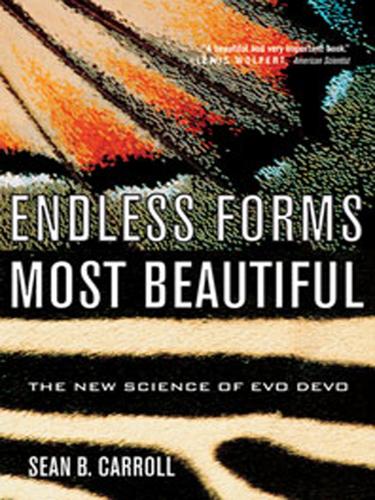
Endless Forms Most Beautiful: The New Science of Evo Devo
by
Sean B. Carroll
Published 10 Apr 2005
Drawings and notes from the notebooks of explorer-naturalist Henry Walter Bates. COMPOSED BY JOSH KLAISS 8 How the Butterfly Got Its Spots “Evolution is chance caught on the wing.” —Stuart Kauffman, At Home in the Universe , paraphrasing a translation of Jacques Monod in Chance and Necessity A FTER ELEVEN YEARS in the Amazon, having collected 14,712 different animal species (8000 of which were new to science), his body wracked by tropical disease, poor nutrition, and prolonged exposure to sun and heat, and having endured robbery, abandonment by servants, and other deprivations, Henry Walter Bates left the jungle for England in June 1859.
…
In Le Hasard et la Nécessité (Paris: Editions du Seuil, 1970), Monod wrote, “Hasard capté, conserve, reproduit per la machinerie de l’invariance et ainsi converti en ordre, régle, nécessité” (p. 128). His English-language translator, Austryn Wainhouse, chose to translate “hasard capté” as “randomness caught on the wing,” but more literally it would be “chance [or, randomness] captured.” Stuart Kauffman, in At Home in the Universe (New York: Oxford University Press, 1995), first quotes Monod as saying “chance caught on the wing” (p. 71) and later extends the quote to “Evolution is chance caught on the wing” (p. 97). A wonderful phrase, well worth quoting, but neither Monod nor his translator ever wrote it.
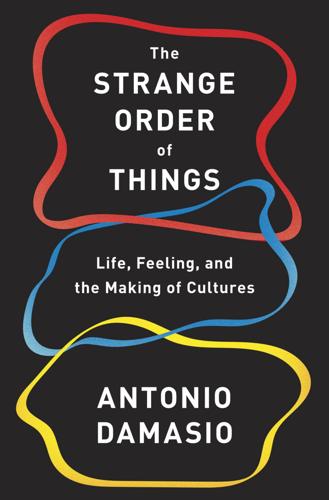
The Strange Order of Things: The Biological Roots of Culture
by
Antonio Damasio
Published 6 Feb 2018
This process achieved two feats: a centrally organized mode of internal life regulation and a mode of genetic transmission of life that superseded simple cell division. The perfecting of the double-tasked genetic machinery would not have stopped since. This version of life’s beginning has been persuasively articulated by Freeman Dyson and is favored by a number of chemists, physicists, and biologists, among them J. B. S. Haldane, Stuart Kauffman, Keith Baverstock, Christian de Duve, and P. L. Luisi. The autonomy of the process, the fact that life is generated from “within,” self-started and self-maintained in all of its aspects, was also well captured by the Chilean biologists Humberto Maturana and Francisco Varela in the process that they named autopoiesis.11 Curiously, on the metabolism-first account, homeostasis “tells” the cell, as it were, to do its business as perfectly as possible so that the cell’s life can persist.
…
Sutherland, “Towards an Evolutionary Theory of the Origin of Life Based on Kinetics and Thermodynamics,” Open Biology 3, no. 11 (2013): 130156; Arto Annila and Keith Baverstock, “Genes Without Prominence: A Reappraisal of the Foundations of Biology,” Journal of the Royal Society Interface 11, no. 94 (2014): 20131017; Keith Baverstock and Mauno Rönkkö, “The Evolutionary Origin of Form and Function,” Journal of Physiology 592, no. 11 (2014): 2261–65; Kepa Ruiz-Mirazo, Carlos Briones, and Andrés de la Escosura, “Prebiotic Systems Chemistry: New Perspectives for the Origins of Life,” Chemical Reviews 114, no. 1 (2014): 285–366; Paul G. Higgs and Niles Lehman, “The RNA World: Molecular Cooperation at the Origins of Life,” Nature Reviews Genetics 16, no. 1 (2015): 7–17; Stuart Kauffman, “What Is Life?,” Israel Journal of Chemistry 55, no. 8 (2015): 875–79; Abe Pressman, Celia Blanco, and Irene A. Chen, “The RNA World as a Model System to Study the Origin of Life,” Current Biology 25, no. 19 (2015): R953–R963; Jan Spitzer, Gary J. Pielak, and Bert Poolman, “Emergence of Life: Physical Chemistry Changes the Paradigm,” Biology Direct 10, no. 33 (2015); Arto Annila and Keith Baverstock, “Discourse on Order vs.

The Deep Learning Revolution (The MIT Press)
by
Terrence J. Sejnowski
Published 27 Sep 2018
The goal was to develop new ways to understand systems like those found in living things, systems more complex than those of physics and chemistry. Unlike the simplicity of how rockets move, which follows Isaac Newton’s laws of motion, there was no simple way to describe how a tree grows. Computer algorithms were used by a colorful group of pioneers to explore these age-old questions about living things. Stuart Kauffman was trained as a physician and became intrigued with gene networks in which proteins called “transcription factors” target genes and influence whether or not they are activated.6 His models were selforganizing and based on networks of binary units that were similar in some respects to neural networks but on much slower timescales.
…
It has since been elaborated with many layers of algorithms to manipulate the bias on searches. 5. A. D. I. Kramer, J. E. Guillory, and J. T. Hancock, “Experimental Evidence of Massive-Scale Emotional Contagion through Social Networks,” Proceedings of the National Academy of Sciences of the United States of America 111, no. 24 (2014): 8788–8790. 6. Stuart Kauffman, The Origins of Order: Self Organization and Selection in Evolution (New York: Oxford University Press, 1993). 7. Christopher G. Langton, ed., Artificial Life: An Overview (Cambridge, MA: MIT Press, 1995). 8. Stephen Wolfram, A New Kind of Science (Champaign, IL: Wolfram Media, 2002). 9. National Research Council, The Limits of Organic Life in Planetary Systems (Washington, DC: National Academies Press, 2007), chap. 5, “Origin of Life,” 53–68. https://www.nap.edu/read/11919/chapter/7. 10.

Making Sense of Chaos: A Better Economics for a Better World
by
J. Doyne Farmer
Published 24 Apr 2024
The economy is like a metabolism My introduction to networks came about because of my interest in the origin of life. My early papers on networks, in the mid 1980s, were written in collaboration with Norman Packard.8 We developed the concept of meta-dynamical systems – networks that could change in response to their environment and also evolve over time. In one of the papers, we teamed up with Stuart Kauffman, a remarkably creative medical doctor and developmental biologist who joined SFI’s faculty a few years later, to make a model for the prebiotic origin of life. We used networks to ask whether metabolisms might have existed even before the origin of life as we know it on the Earth now. In other words, we posited the existence of a possible simpler form of life that you might call proto-life, which might have been a precursor to prokaryotes, the earliest of Earth’s life forms.9 Richard Bagley, a chemistry graduate student at UC San Diego, came to Los Alamos to work with me and wrote his thesis there, under my supervision.
…
An agent-based model built for the Nasdaq stock exchange is proof that this can work.16 Prior to 1997, US stock prices were traded in increments of an eighth of a dollar. Then, American stock exchanges were ordered by the SEC to begin trading in increments of a penny, a process called decimalization. To try to understand any possible adverse side-effects, Nasdaq hired the BiosGroup, a consulting company of complex-systems scientists founded by Stuart Kauffman. In an effort led by the complex-systems scientist Vince Darley, the BiosGroup built an agent-based model for trading on the Nasdaq. The agents in the model were traders who followed specific strategies. The role of market-makers was particularly important. The model made six predictions, five of which were borne out when the change to decimalization was actually made.
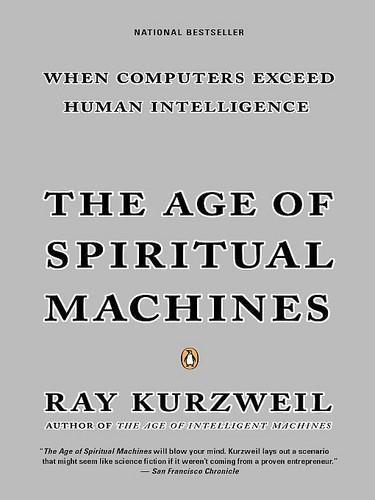
The Age of Spiritual Machines: When Computers Exceed Human Intelligence
by
Ray Kurzweil
Published 31 Dec 1998
Yet who seeing the snowflake, who seeing simple lipid molecules cast adrift in water forming themselves into cell-like hollow lipid vesicles, who seeing the potential for the crystallization of life in swarms of reacting molecules, who seeing the stunning order in networks linking tens upon tens of thousands of variables, can fail to entertain a central thought: if ever we are to attain a final theory in biology, we will surely have to understand the commingling of self-organization and selection. We will have to see that we are the natural expressions of a deeper order. Ultimately, we will discover in our creation myth that we are expected after all. —Stuart Kauffman As I discussed earlier, an evolutionary algorithm involves a simulated environment in which simulated software “creatures” compete for survival and the right to reproduce. Each software creature represents a possible solution to a problem encoded in its digital “DNA.” The creatures allowed to survive and reproduce into the next generation are the ones that do a better job of solving the problem.
…
These three sources discuss the exponential growth of computing. 21 A mathematical theory concerning the difference between information and noise and the ability of a communications channel to carry information. 22 The Santa Fe Institute has played a pioneering role in developing concepts and technology related to complexity and emergent systems. One of the principal developers of paradigms associated with chaos and complexity has been Stuart Kauffman. Kauffman’s At Home in the Universe: The Search for the Laws of Self-Organization and Complexity (Oxford: Oxford University Press, 1995) looks “at the forces for order that lie at the edge of chaos” (from the card catalog description).In his book Evolution of Complexity by Means of Natural Selection (Princeton, NJ: Princeton University Press, 1988), John Tyler Bonner asks the question: “How is it that an egg turns into an elaborate adult?
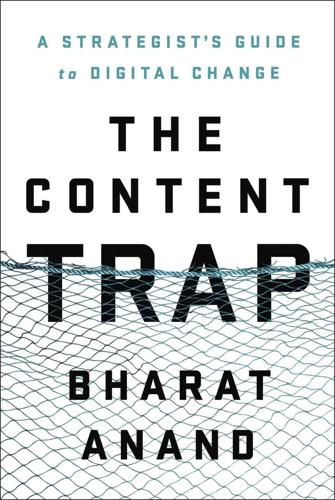
The Content Trap: A Strategist's Guide to Digital Change
by
Bharat Anand
Published 17 Oct 2016
Third, mimicking a competitor’s entire set of connected decisions was nearly impossible, since that could quickly get overwhelmingly complex. And even if a rival imitated most aspects of a firm and missed a mere handful, it might still fail. While these authors were crafting their ideas, researchers in distant fields—Jay Forrester in systems dynamics, Stuart Kauffman in evolutionary biology—were making similar contributions. They approached the same problem in different ways: Some invoked formal mathematical models and simulations, others relied on logical consistency and inductive inference. But the central message in all their works was the same. And as it applied to business strategy, this message was as follows: Organizational choices are connected.
…
“when the decisions that embody” Jan Rivkin, “Imitation of Complex Strategies,” Management Science 46, no. 6 (June 2000): 824–44. researchers in distant fields I am grateful to Jan Rivkin for an interview in February 2014. See Jay Forrester, “Systems Dynamics and the Lessons of 35 Years,” in Kenyon De Greene, ed., A Systems-Based Approach to Policy Making (New York: Springer, 1993); Stuart Kauffman, The Origins of Order: Self-Organization and Selection in Evolution (Oxford: Oxford University Press, 1993); S. Kauffman and S. A. Johnsen, “Co-Evolution to the Edge of Chaos: Coupled Fitness Landscapes, Poised States, and Co-Evolutionary Avalanches,” Journal of Theoretical Biology 149 (1991): 467–505.
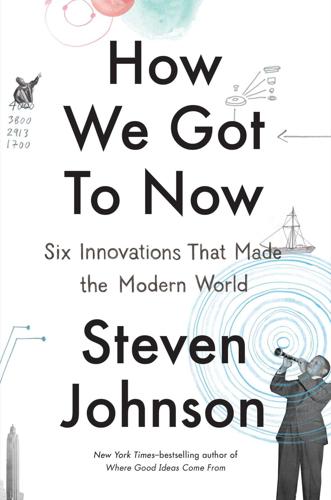
How We Got to Now: Six Innovations That Made the Modern World
by
Steven Johnson
Published 28 Sep 2014
For thousands of years, the idea of making artificial cold had been almost unthinkable to human civilization. We invented agriculture and cities and aqueducts and the printing press, but cold was outside the boundaries of possibility for all those years. And yet somehow artificial cold became imaginable in the middle of the nineteenth century. To use the wonderful phrase of the complexity theorist Stuart Kauffman, cold became part of the “adjacent possible” of that period. How do we explain this breakthrough? It’s not just a matter of a solitary genius coming up with a brilliant invention because he or she is smarter than everyone else. And that’s because ideas are fundamentally networks of other ideas.
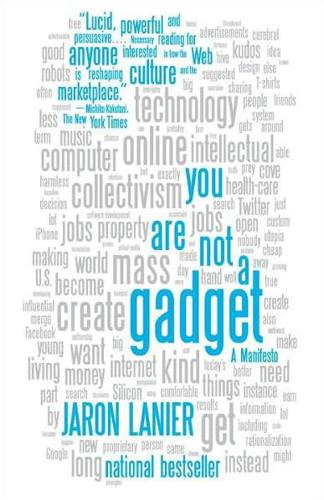
You Are Not a Gadget
by
Jaron Lanier
Published 12 Jan 2010
The need to interoperate more tightly with the “dumbness” of software could help them undertake their work more clearly and safely. Furthermore, this sort of transaction representation has already been done internally within some of the more sophisticated hedge funds. Computer science is mature enough to take this problem on. * Some of my collaborators in this research include Paul Borrill, Jim Herriot, Stuart Kauffman, Bruce Sawhill, Lee Smolin, and Eric Weinstein. PART THREE The Unbearable Thinness of Flatness THREE WARNINGS have been presented in the previous chapters, conveying my belief that cybernetic totalism will ultimately be bad for spirituality, morality, and business. In my view, people have often respected bits too much, resulting in a creeping degradation of their own qualities as human beings.
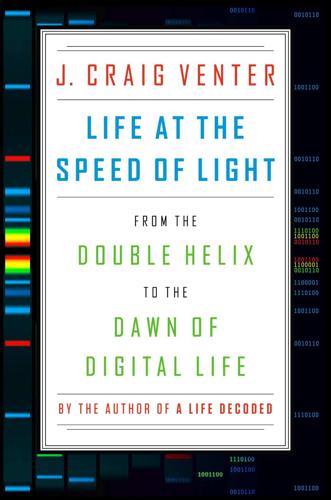
Life at the Speed of Light: From the Double Helix to the Dawn of Digital Life
by
J. Craig Venter
Published 16 Oct 2013
has gone on to influence generations of biologists. (Fifty years after he had delivered these remarkable talks, Michael P. Murphy and Luke A. J. O’Neill, of Trinity, celebrated the anniversary by inviting outstanding scientists from a range of disciplines—a prestigious guest list that included Jared Diamond, Stephen Jay Gould, Stuart Kauffman, John Maynard Smith, Roger Penrose, Lewis Wolpert, and the Nobel laureates Christian de Duve and Manfred Eigen—to predict what the next half-century might hold.) I have read What Is Life? on at least five different occasions, and each time, depending on the stage of my career, its message has taken on different meanings along with new salience and significance.
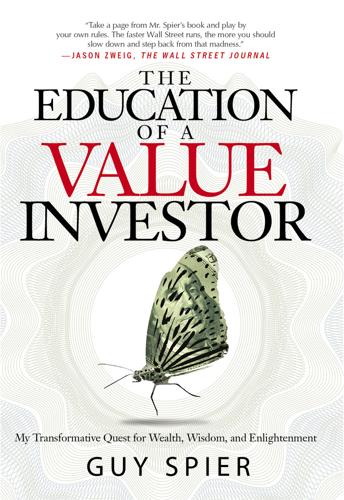
The Education of a Value Investor: My Transformative Quest for Wealth, Wisdom, and Enlightenment
by
Guy Spier
Published 8 Sep 2014
Force: The Hidden Determinants of Human Behavior by David Hawkins Simple Heuristics That Make Us Smart by Gerd Gigerenzer and Peter Todd The Archaeology of Mind: Neuroevolutionary Origins of Human Emotions by Jaak Panksepp and Lucy Biven The Art of Thinking Clearly by Rolf Dobelli The Developing Mind: How Relationships and the Brain Interact to Shape Who We Are by Daniel Siegel The Feeling of What Happens: Body and Emotion in the Making of Consciousness by Antonio Damasio The 48 Laws of Power by Robert Greene The Neuroscience of Psychotherapy: Healing the Social Brain by Louis Cozolino There Are No Accidents: Synchronicity and the Stories of Our Lives by Robert Hopcke Thinking, Fast and Slow by Daniel Kahneman Waking the Tiger: Healing Trauma by Peter Levine with Ann Frederick Willpower: Rediscovering the Greatest Human Strength by Roy Baumeister and John Tierney Science At Home in the Universe: The Search for the Laws of Self-Organization and Complexity by Stuart Kauffman Connected: The Surprising Power of Our Social Networks and How They Shape Our Lives by Nicholas Christakis and James Fowler Deep Simplicity: Bringing Order to Chaos and Complexity by John Gribbin Emergence: The Connected Lives of Ants, Brains, Cities, and Software by Steven Johnson How Nature Works: The Science of Self-Organized Criticality by Per Bak Journey to the Ants: A Story of Scientific Exploration by Bert Hölldobler and Edward O.
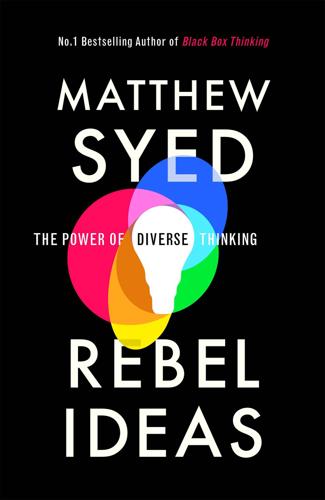
Rebel Ideas: The Power of Diverse Thinking
by
Matthew Syed
Published 9 Sep 2019
This pattern applies to Facebook (which connected an existing web infrastructure with technology enabling people to build digital networks and share media) and Instagram (which linked Facebook’s most basic concepts with a smartphone application complete with the capacity to modify a photo with digital filters) and beyond. Recombination is the leitmotiv of digital innovation. With each new combination, fresh combinations loom into the terrain of what the biologist Stuart Kauffman calls ‘the adjacent possible’. New prospects open up, new vistas come into view. ‘Digital innovation is recombinant innovation in its purest form,’ Brynjolfsson and McAfee write. ‘Each development becomes a building block for future innovations . . . building blocks don’t ever get used up. In fact, they increase the opportunities for future recombinations.’15 But this leaves us with a critical question.
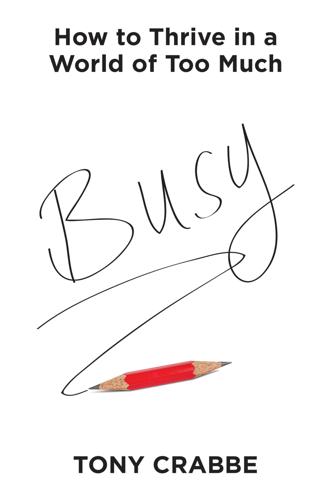
Busy
by
Tony Crabbe
Published 7 Jul 2015
“First break all the rules,” The Economist (April 10, 2010), http://www.economist.com/node/15879359. 4. Aza Raskin, “You Are Solving the Wrong Problem,” UX Magazine, (May 2, 2011), http://uxmag.com/articles/you-are-solving-the-wrong-problem. 5. Mihaly Csikszentmihalyi, Creativity: Flow and the Psychology of Discovery and Invention (New York: Harper Perennial, 1997). 6. Stuart Kauffman, At Home in the Universe: The Search for the Laws of Self-Organization and Complexity (New York: Oxford University Press, 1996). 7. Tim Harford, Adapt: Why Success Always Starts with Failure (New York: Farrar, Straus and Giroux, 2011). 8. Ibid. 9. Ibid. Chapter 7: Busy Is a Terrible Brand (Develop a Better Brand) 1.

More Than You Know: Finding Financial Wisdom in Unconventional Places (Updated and Expanded)
by
Michael J. Mauboussin
Published 1 Jan 2006
Mauboussin and Kristen Bartholdson, “Puggy Pearson’s Prescription,” The Consilient Observer 1, no. 11 (June 4, 2002). 5 Kathleen M. Eisenhardt and Donald N. Sull, “Strategy as Simple Rules,” Harvard Business Review (January 2001): 107-16. 23. Survival of the Fittest 1 Dan Goodgame, “The Game of Risk: How the Best Golfer in the World Got Even Better,” Time, August 14, 2000. 2 Stuart Kauffman, At Home in the Universe (Oxford: Oxford University Press, 1996). 3 Steve Maguire, “Strategy Is Design: A Fitness Landscape Framework,” Managing Complexity in Organizations: A View in Many Directions (Westport, Conn.: Quorum Books, 1999), 67-104. 4 Eric D. Beinhocker, “Robust Adaptive Strategies,” Sloan Management Review 40, no. 3 (Spring 1999): 95-106. 5 Daniel C.
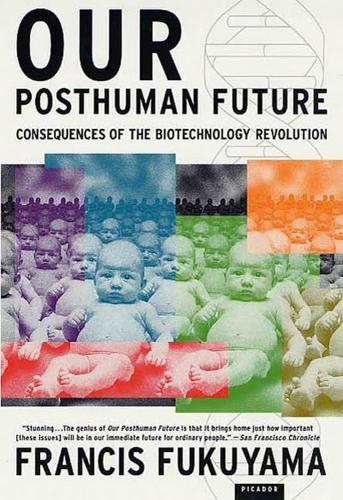
Our Posthuman Future: Consequences of the Biotechnology Revolution
by
Francis Fukuyama
Published 1 Jan 2002
When it comes to higher-order conditions and behaviors, such as intelligence, aggression, sexuality, and the like, we know nothing more today than that there is some degree of genetic causation, from studies in behavior genetics. We have no idea what genes are ultimately responsible, but suspect that the causal relationships are extraordinarily complex. In the words of Stuart Kauffman, founder and chief scientific officer of BiosGroup, these genes are “some kind of parallel-processing chemical computer in which genes are continuously turning one another on and off in some vastly complex network of interaction. Cell-signaling pathways are linked to genetic regulatory pathways in ways we’re just beginning to unscramble.”4 The first step toward giving parents greater control over the genetic makeup of their children will come not from genetic engineering but with preimplantation genetic diagnosis and screening.
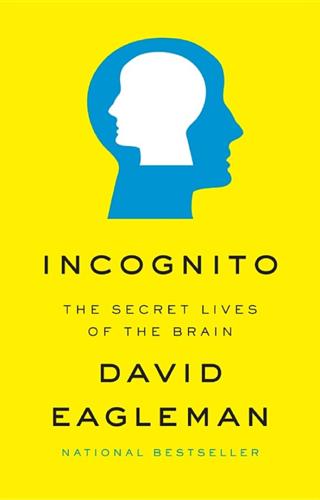
Incognito: The Secret Lives of the Brain
by
David Eagleman
Published 29 May 2011
If we were to work out a complete physics of neurons and their chemicals, would that elucidate the mind? Probably not. The brain presumably does not break the laws of physics, but that does not mean that equations describing detailed biochemical interactions will amount to the correct level of description. As the complexity theorist Stuart Kauffman puts it, “A couple in love walking along the banks of the Seine are, in real fact, a couple in love walking along the banks of the Seine, not mere particles in motion.” A meaningful theory of human biology cannot be reduced to chemistry and physics, but instead must be understood in its own vocabulary of evolution, competition, reward, desire, reputation, avarice, friendship, trust, hunger, and so on—in the same way that traffic flow will be understood not in the vocabulary of screws and spark plugs, but instead in terms of speed limits, rush hours, road rage, and people wanting to get home to their families as soon as possible when their workday is over.
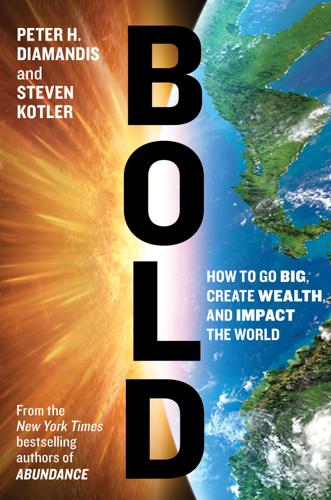
Bold: How to Go Big, Create Wealth and Impact the World
by
Peter H. Diamandis
and
Steven Kotler
Published 3 Feb 2015
And sometime in the next ten years we are going to launch our first asteroid mining mission. No doubt about it, we are a species built for bold. But without bold leadership to help us set the course, our history also tells us that we can wander in the desert of bad decisions for a mighty long time. “The adjacent possible” is theoretical biologist Stuart Kauffman’s wonderful term for all the myriad paths unlocked by every novel discovery, the multitude of universes hidden inside something as simple as an idea. 27 Abundance is one of those simple ideas. Its time has come. It is up to the bold to unlock this adjacent possible, to help humanity live up to our full exponential potential.
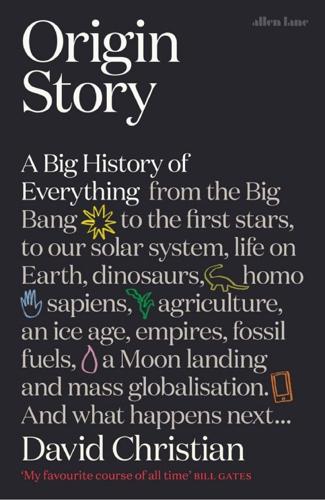
Origin Story: A Big History of Everything
by
David Christian
Published 21 May 2018
I spent a very enjoyable eight years at San Diego State University, whose historians provided both support and smart insights into how this new approach to history might play out in the diverse academic communities of the United States and whose graduate students proved to be remarkably disciplined and skilled tutors in big history. Many experts in different fields have offered new insights or course corrections; they include Lawrence Krauss, Charles Lineweaver, Stuart Kauffman, Ann McGrath, Iain McCalman, Will Steffen, Jan Zalasiewicz, and many, many more. I have received immense support and rich feedback from my editors at Little, Brown, and at Penguin: Tracy Behar, Charlie Conrad, and Laura Stickney. I thank Tracy Roe for her scrupulous and eagle-eyed copyediting.
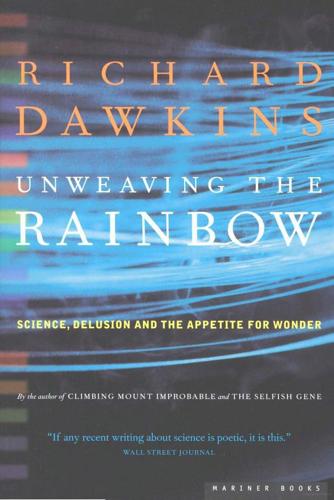
Unweaving the Rainbow
by
Richard Dawkins
Published 7 Aug 2011
The extreme Gouldian view—certainly the view inspired by his rhetoric, though it is hard to tell from his own words whether he literally holds it himself—is radically different from and utterly incompatible with the standard neo-Darwinian model. It also, as I shall show, has implications which, once they are spelled out, anybody can see are absurd. It is very clearly expressed—betrayed might be a better word—in asides in Stuart Kauffman's At Home in the Universe (1995): One might imagine that the first multicellular creatures would all be very similar, only later diversifying, from the bottom up, into different genera, families, orders, classes, and so on. That, indeed, would be the expectation of the strictest conventional Darwinist Darwin, profoundly influenced by the emerging view of geologic gradualism, proposed that all evolution occurred by the very gradual accumulation of useful variations.
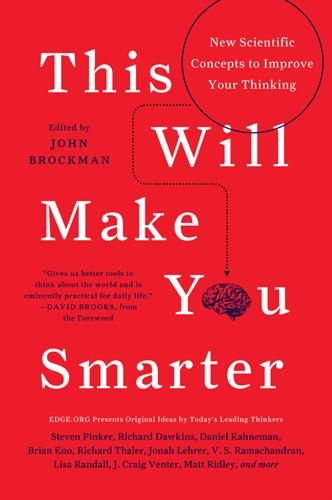
This Will Make You Smarter: 150 New Scientific Concepts to Improve Your Thinking
by
John Brockman
Published 14 Feb 2012
Evolutionary dynamics has no need of abstract and vast spaces like all the possible viable animals, DNA sequences, sets of proteins, or biological laws. Exaptations are too unpredictable and too dependent on the whole suite of living creatures to be analyzed and coded into properties of DNA sequences. Better, as the theoretical biologist Stuart Kauffman proposes, to think of evolutionary dynamics as the exploration, in time, by the biosphere, of the adjacent possible. The same goes for the evolution of technologies, economies, and societies. The poverty of the conception that economic markets tend to unique equilibria, independent of their histories, shows the danger of thinking outside of time.
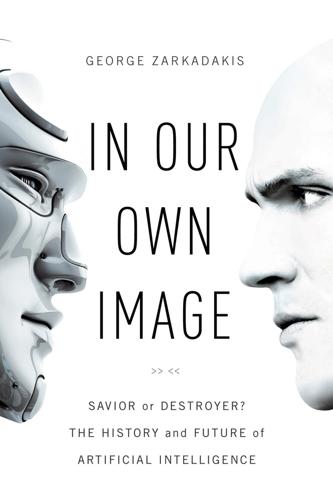
In Our Own Image: Savior or Destroyer? The History and Future of Artificial Intelligence
by
George Zarkadakis
Published 7 Mar 2016
One day his clone will return here to do exactly the same thing, the circle repeating forevermore. Autopoiesis looks like Borges’s circle of wizards being born and dying in the temple. But how was the first wizard made? Another student of the legendary Walter McCulloch claims to have an answer to that question. Stuart Kauffman, currently at the University of Vermont, studied a class of chemical reactions in which the product of reaction is the catalyst of the reaction. These so-called ‘autocatalytic’ reactions may explain the origins of life – or how the first autopoietic wizard in Borges’s story came about.19 Experiments have shown20 how, through autocatalysis, chemical ingredients can exhibit a rudimentary form of natural selection.

Nomad Citizenship: Free-Market Communism and the Slow-Motion General Strike
by
Eugene W. Holland
Published 1 Jan 2009
And the results of experimentation with planned economies of the kind suggested by major Marxism are by now fairly conclusive—planned economies are inferior to market econo mies according to the criterion that matters most for schizoanalytic nom adology: the overall development of productive forces.27 In circumstances that have necessarily changed, the Problem now is not how to subordinate social production to the conscious mastery of communal control but how to free from capitalist command the potential of markets to self-organize social production immanently.28 Although theories of free-market self-organization have a centurieslong history (dating at least as far back as the sixteenth century) and have recently been recast in complexity theory terms by the likes of Stuart Kauffman, Friedrich von Hayek is, for our purposes, the most important proponent of what he calls decentralized or market planning. To be sure, invoking the economic theories of von Hayek is almost as problematic as invoking the political theory of Carl Schmitt: although not himself a Nazi, von Hayek was a severe critic of socialism and (for slightly different rea sons) an obdurate foe of organized labor; what’s more, ideas of his were championed by the likes of Margaret Thatcher, among others.
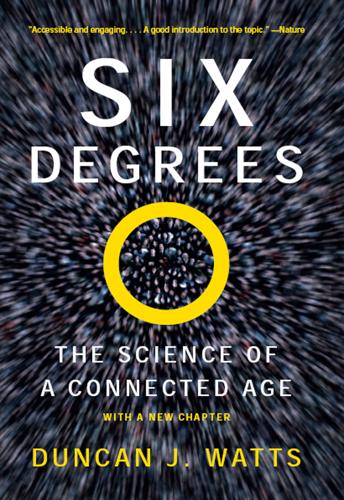
Six Degrees: The Science of a Connected Age
by
Duncan J. Watts
Published 1 Feb 2003
When it came to mathematics, however, he was an absolute juggernaut, publishing nearly fifteen hundred papers in his lifetime (and even a few after), more than any mathematician in history, bar possibly the great Euler. He also invented, with his collaborator Alfred Rényi, the formal theory of random graphs. A random graph is, as the name might suggest, a network of nodes connected by links in a purely random fashion. To use an analogy of the biologist Stuart Kauffman, imagine throwing a boxload of buttons onto the floor, then choosing pairs of buttons at random and tying them together with appropriate-length threads of string (Figure 2.1). If we have a very large floor, a very large box of buttons, and plenty of spare time, what would such networks end up looking like?

The Blockchain Alternative: Rethinking Macroeconomic Policy and Economic Theory
by
Kariappa Bheemaiah
Published 26 Feb 2017
It was, and will be, one of the most important scientific discoveries of the century. 11Some of the early trailblazers who combined the study of complexity theory with economics include, Kenneth Arrow (economist), Philip Anderson (physicist), Larry Summers (economist), John Holland (physicist), Tom Sargent (economist), Stuart Kauffman (physicist), David Pines (physicist), José Scheinkman (economist), William Brock (economist) and of course, W. B. Arthur (economist), who coined the term complexity economics and has been largely responsible for its initial growth and exposure to mainstream academia. 12Knightian uncertainty is an economic term that refers to risk.
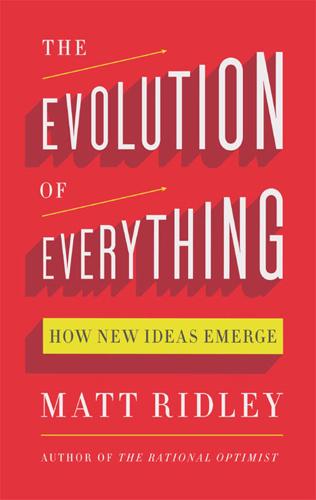
The Evolution of Everything: How New Ideas Emerge
by
Matt Ridley
This path dependence is obvious in some ways. There’s not much point in mining uranium till you have invented steel, cement, electricity and computing, and understood nuclear physics. Technology proceeds, like evolution, to the ‘adjacent possible’, a phrase coined by the evolutionary biologist Stuart Kauffman. It does not leap far into the future. I recently tried to think of examples of inventions that came long after their time, that should have been invented much sooner than they were – things we take for granted now and that would have been great for our grandparents to have had. It’s surprisingly hard to come up with them.

Human Frontiers: The Future of Big Ideas in an Age of Small Thinking
by
Michael Bhaskar
Published 2 Nov 2021
In its place is a drift to the middle. Eccentrics and outliers are ever less welcome. As physicist Lee Smolin puts it: ‘It is a cliché to ask whether a young Einstein would now be hired by a university. The answer is obviously no.’ 62 What about a young Marie Curie? Or more recent mavericks like Stuart Kauffman, Lynn Margulis or David Deutsch (the pioneer of quantum computing who recently admitted his work would never have been funded today)?63 Would a thinker like Derek Parfit, who published two of the most important books of ethical philosophy of modern times and little else, find a foothold in a system that relentlessly prioritises quantity?
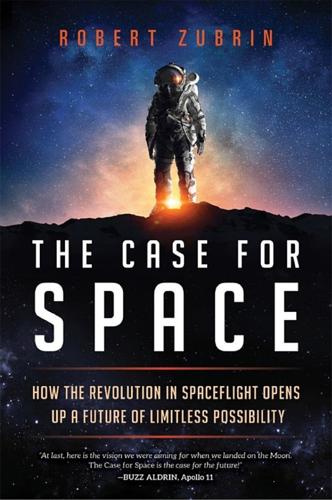
The Case for Space: How the Revolution in Spaceflight Opens Up a Future of Limitless Possibility
by
Robert Zubrin
Published 30 Apr 2019
Paul Davies, The Goldilocks Enigma: Why Is the Universe Just Right for Life? (New York: Mariner Books, 2008). 18. John Barrow and Frank Tipler, The Anthropic Cosmological Principle (New York: Oxford University Press, 1988). 19. Lee Smolin, The Life of the Cosmos (New York: Oxford University Press, 1997). 20. Stuart Kauffman, At Home in the Universe: The Search for the Laws of Self-Organization and Complexity (New York: Oxford University Press, 1996). 21. I. S. Shklovskii and Carl Sagan, Intelligent Life in the Universe (New York: Delta Books, 1966). CHAPTER 10. FOR THE CHALLENGE 1. Christopher Stringer and Robin McKie, African Exodus: The Origins of Modern Humanity (New York: Henry Holt, 1997). 2.

Culture and Prosperity: The Truth About Markets - Why Some Nations Are Rich but Most Remain Poor
by
John Kay
Published 24 May 2004
If topography is constantly changing, like the business and economic landscape, the informational task is impossible. Simon asserts that we do not maximize, we satisfy-we follow rules and procedures, like the organization of supermarket queues, that produce results that are good enough. Simon's example parallels complexity theorist Stuart Kauffman's description of what he calls fitness landscapes. 26 Kauffman is interested in the general mathematical structure of complex systems. Height above sea level in Simon's example might equally be a measure of how well a species is adapted to its environment, or how effectively scarce resources are allocated between competing ends.
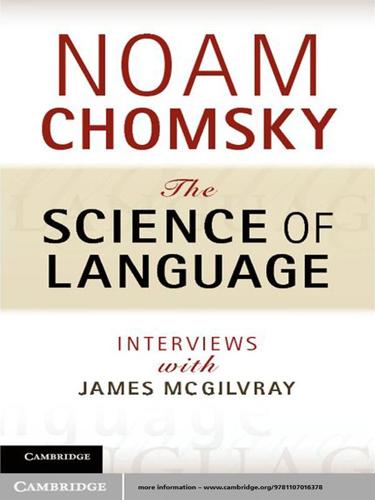
The Science of Language
by
Noam Chomsky
Published 24 Feb 2012
There is a considerable increase in degree of simplification. And there also seems to be some progress toward biology – not necessarily biology as typically understood by philosophers and by many others, as a selectional evolutionary story about the gradual introduction of a complex structure, but biology as understood by people like Stuart Kauffman (1993) and D'Arcy Thompson (1917/1942/1992). I wonder if you would comment on the extent to which that kind of mathematical approach has progressed.[C] NC: Ever since this business began in the early fifties – two or three students, Eric Lenneberg, me, Morris Halle, apparently nobody else – the topic we were interested in was, how could you work this into biology?
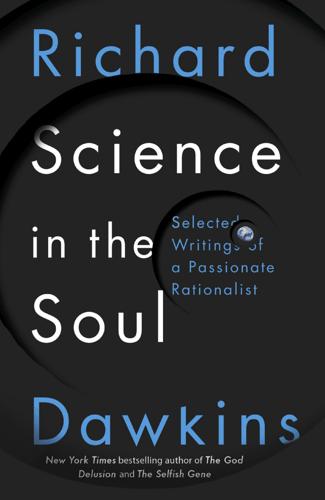
Science in the Soul: Selected Writings of a Passionate Rationalist
by
Richard Dawkins
Published 15 Mar 2017
Creationists presumably believe the Turbellaria have lived on Earth for the same length of time as all other animals, give or take a day or two during October 4004 BC. So if a massive class of animals failed to leave a single fossil, surely the vertebrates can be forgiven for a few ‘gaps’ in their fossil record. *4 This was exactly the misapprehension formed by the distinguished (and far from stupid) theoretical biologist Stuart Kauffman, who imagined that ‘species which founded taxa appear to have built up the higher taxa from the top down. That is, exemplars of major phyla were present first, followed by progressive filling in at class, order, and lower taxonomic levels.’ This profound misunderstanding was nurtured by the excesses of ‘poetic science’ beloved of Stephen Jay Gould – specifically, Gould’s book Wonderful Life – against which I warned in the Afterword to the essay on ‘Universal Darwinism’ in section II of this collection
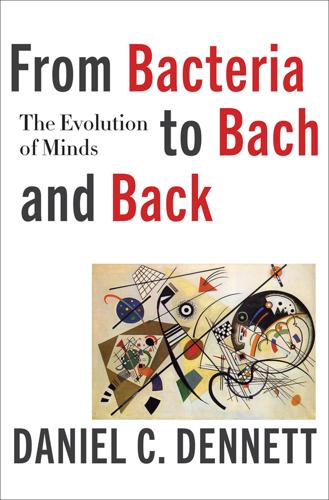
From Bacteria to Bach and Back: The Evolution of Minds
by
Daniel C. Dennett
Published 7 Feb 2017
Of course if there really is nothing new under the sun, this is no limitation, but human imagination, the capacity we have to envision realities that are not accessible to us by simple hill climbing from where we currently are, does seem to be a major game-changer, permitting us to create, by foresighted design, opportunities and, ultimately, enterprises and artifacts that could not otherwise arise. A conscious human mind is not a miracle, not a violation of the principles of natural selection, but a novel extension of them, a new crane that adjusts evolutionary biologist Stuart Kauffman’s concept of the adjacent possible: many more places in Design Space are adjacent to us because we have evolved the ability to think about them and either seek them or shun them. The unanswered question for Domingos and other exponents of deep learning is whether learning a sufficiently detailed and dynamic theory of agents with imagination and reason-giving capabilities would enable a system (a computer program, a Master Algorithm) to generate and exploit the abilities of such agents, that is to say, to generate all the morally relevant powers of a person.103 My view is (still) that deep learning will not give us—in the next fifty years—anything like the “superhuman intelligence” that has attracted so much alarmed attention recently (Bostrom 2014; earlier invocations are Moravec 1988; Kurzweil 2005; and Chalmers 2010; see also the annual Edge world question 2015; and Katchadourian 2015).
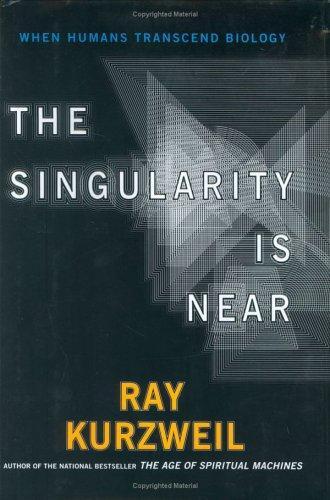
The Singularity Is Near: When Humans Transcend Biology
by
Ray Kurzweil
Published 14 Jul 2005
See Richard Young, "Evolution of the Human Hand: The Role of Throwing and Clubbing," Journal of Anatomy 202 (2003): 165–74; Frank Wilson, The Hand: How Its Use Shapes the Brain, Language, and Human Culture (New York: Pantheon, 1998). 9. The Santa Fe Institute has played a pioneering role in developing concepts and technology related to complexity and emergent systems. One of the principal developers of paradigms associated with chaos and complexity is Stuart Kauffman. Kauffman's At Home in the Universe: The Search for the Laws of Self-Organization and Complexity (Oxford: Oxford University Press, 1995) looks "at the forces for order that lie at the edge of chaos." In his book Evolution of Complexity by Means of Natural Selection (Princeton: Princeton University Press, 1988), John Tyler Bonner asks the questions "How is it that an egg turns into an elaborate adult?
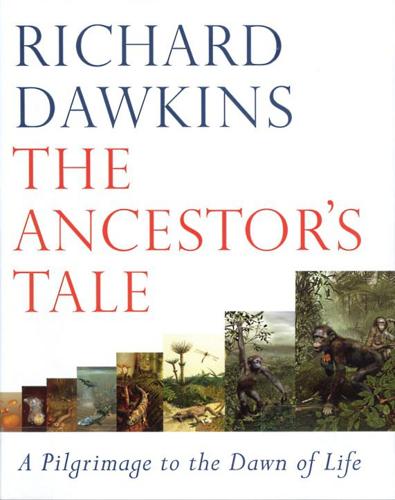
The Ancestor's Tale: A Pilgrimage to the Dawn of Evolution
by
Richard Dawkins
Published 1 Jan 2004
And yet in my opening lines I confessed to an ear for a rhyme that would lead me into cautious flirtation with recurring patterns, with lawfulness and forward directionality in evolution. So although my return as host will not be a retracing of steps, I shall be publicly wondering whether something a little bit like a retracing might not be appropriate. Rerunning Evolution The American theoretical biologist Stuart Kauffman put the question well in a 1985 article: One way to underline our current ignorance is to ask, if evolution were to recur from the Precambrian when early eukaryotic cells had already been formed, what organisms in one or two billion years might be like. And, if the experiment were repeated myriads of times, what properties of organisms would arise repeatedly, what properties would be rare, which properties were easy for evolution to happen upon, which were hard?
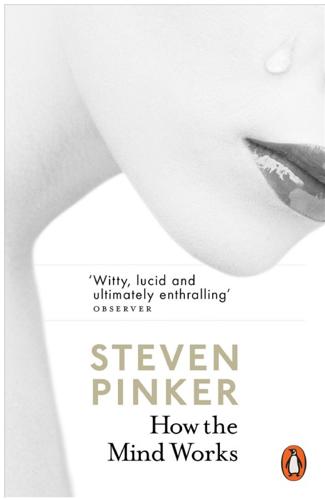
How the Mind Works
by
Steven Pinker
Published 1 Jan 1997
The theory looks for mathematical principles of order underlying many complex systems: galaxies, crystals, weather systems, cells, organisms, brains, ecosystems, societies, and so on. Dozens of new books have applied these ideas to topics such as AIDS, urban decay, the Bosnian war, and, of course, the stock market. Stuart Kauffman, one of the movement’s leaders, suggested that feats like self-organization, order, stability, and coherence may be an “innate property of some complex systems.” Evolution, he suggests, may be a “marriage of selection and self-organization.” Complexity theory raises interesting issues. Natural selection presupposes that a replicator arose somehow, and complexity theory might help explain the “somehow.”